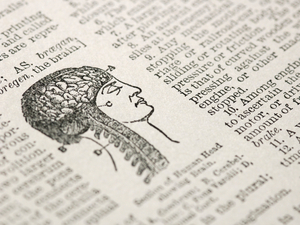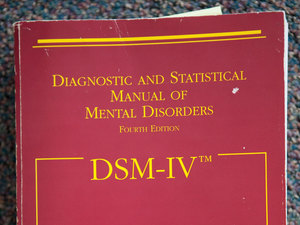NPR— December 29, 2010
by Alix Spiegel
The American Psychiatric Association’s Diagnostic and Statistical Manual, or DSM, updated roughly every 15 years, has detailed descriptions of all the mental disorders officially recognized by psychiatry. It’s used by psychiatrists, insurance companies, drug researchers, the courts and even schools.
But it’s not without controversy: The proposed changes suggested this year have sparked a kind of civil war within psychiatry.
In a small condo on the beach in San Diego lives Allen Frances, who blames himself for what he calls the “Epidemic of Asperger’s.” Frances edited the last edition of the DSM, and he’s also the new DSM’s most prominent critic. Frances is the one who put the word Asperger’s in the DSM in the first place, thereby making it an official mental disorder.
In the editions before Frances was editor, there was an entry for autism, but it was defined by severe symptoms. Frances says doctors felt the diagnosis for autism didn’t cover a more mild disorder they were actually encountering.
“Pediatricians and child psychiatrists would see kids who could talk but who had social discomfort — severe social discomfort — and awkwardness and a very restricted and impairing level of interests and activities, and they wanted a diagnosis for this,” Frances says.
A study was done to figure out how common Asperger’s was, and the results were clear: It was vanishingly rare. Then Frances put it in the DSM, and the number of kids diagnosed with the disorder exploded. Frances remembers sitting in his condo reading articles about this new epidemic of Asperger’s that was sweeping the nation.
“At that point I did an ‘oops,’ ” he says. “This is a complete misunderstanding. It was distressing. Quite distressing.”
Surprising Incentives
It’s not that Frances doesn’t think that Asperger’s exists and is a real problem for some people; he does. But he also believes the diagnosis is now radically overused in a way that he and his colleagues never intended. And why, in his view, did Asperger’s explode? Primarily, Frances says, because schools created a strange unintentional incentive.
“In order to get specialized services, often one-to-one education, a child must have a diagnosis of Asperger’s or some other autistic disorder,” he says.
“And so kids who previously might have been considered on the boundary, eccentric, socially shy, but bright and doing well in school would mainstream [into] regular classes,” Frances says. “Now if they get the diagnosis of Asperger’s disorder, [they] get into a special program where they may get $50,000 a year worth of educational services.”
Disturbing Consequences
Frances worried this might cause a misallocation of school resources. And Frances points to another change he made — which, for him, has had even more disturbing consequences. Essentially, Frances and his colleagues made it much easier to get a diagnosis of bipolar disorder. And he says that created this incredible opportunity for drug companies.
“Drug companies got indications for treating bipolar disorder,” Frances says. “Not just with mood stabilizers, but also with the newer antipsychotic drugs. And they began very intensive ubiquitous advertising campaigns. So the rates of bipolar disorder doubled. And lots of people got way too much antipsychotic and mood stabilizing medicines. And these aren’t safe drugs.”
And for Frances, the lesson of these experiences is clear. Once you put a new diagnosis in the DSM, there is no controlling what will happen to it. So there’s only one thing to do:
“Anticipate the worst. If something can be misused, it will be misused,” Frances says. “If diagnosis can lead to overdiagnosis and overtreatment, that will happen. So you need to be very, very cautious in making changes that may open the door for a flood of fad diagnoses.”
As far as Frances is concerned, the new DSM is proposing too many diagnoses that are written in too broad a way, meaning that ultimately a huge number of new people will be categorized as mentally ill.
Read the rest of the article here: http://www.npr.org/2010/12/29/132407384/whats-a-mental-disorder-even-experts-cant-agree
To read statements from other psychiatrists/psychologists on the lack of science to support mental disorders as legitimate “illnesses” click here:
http://www.cchrint.org/psychiatric-disorders/psychiatrists-on-lack-of-any-medical-or-scientific-tests/



